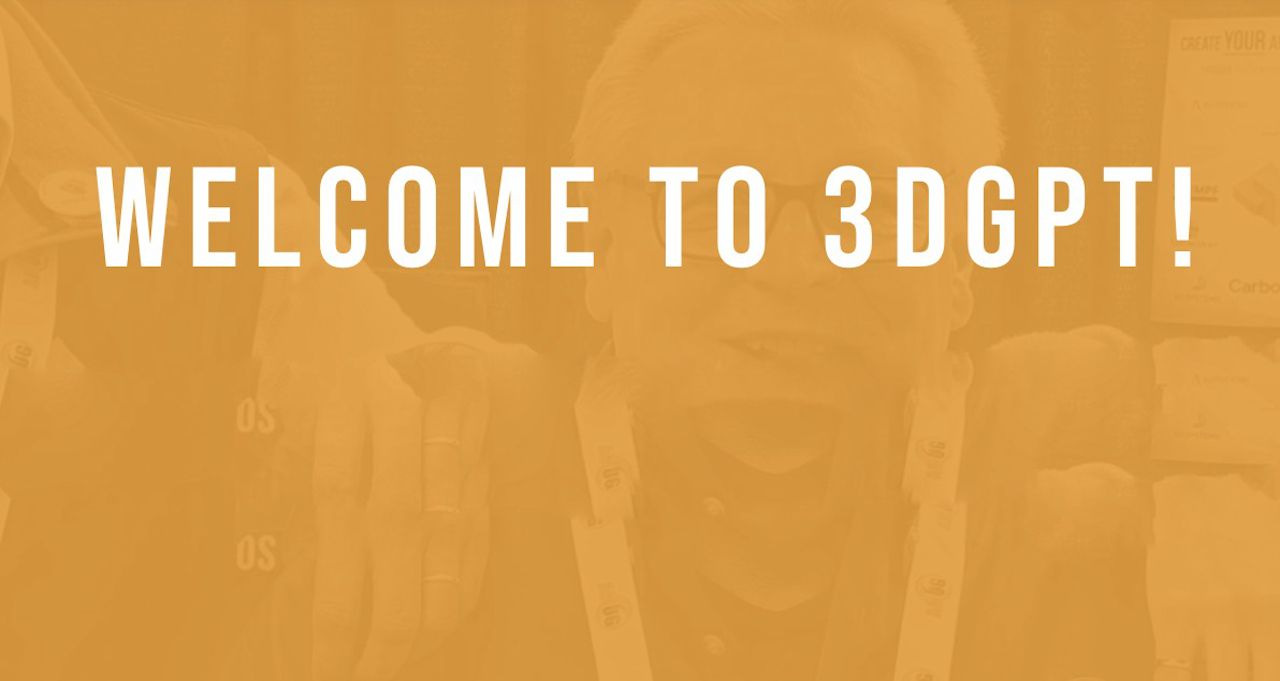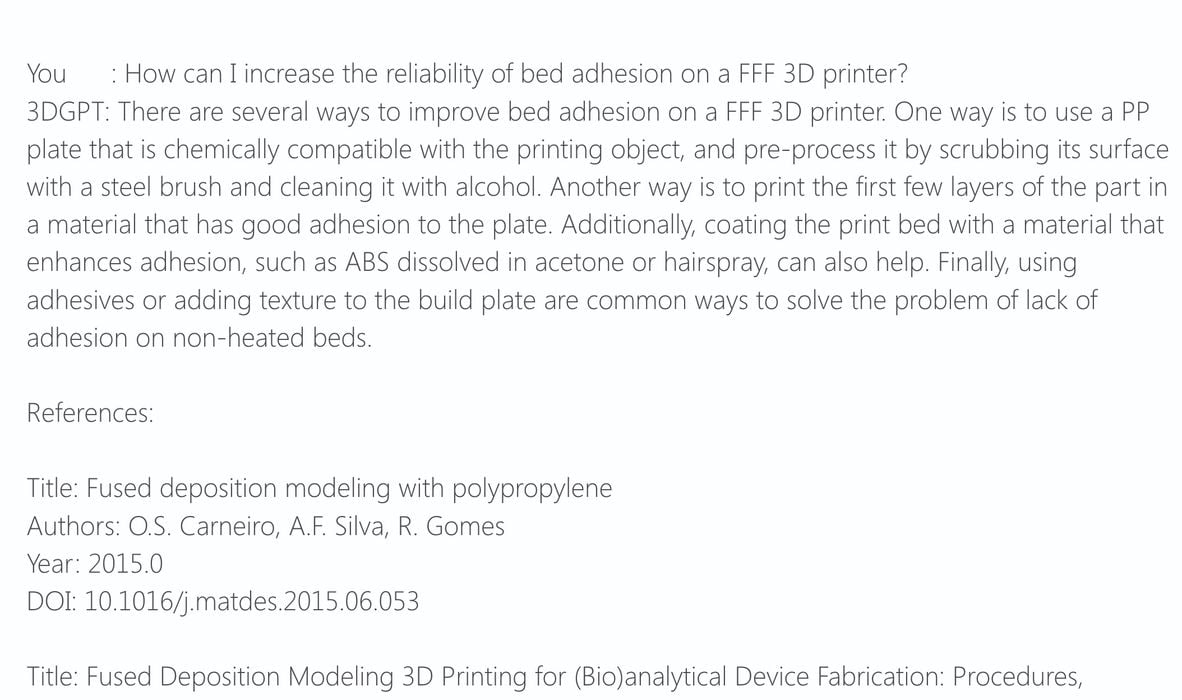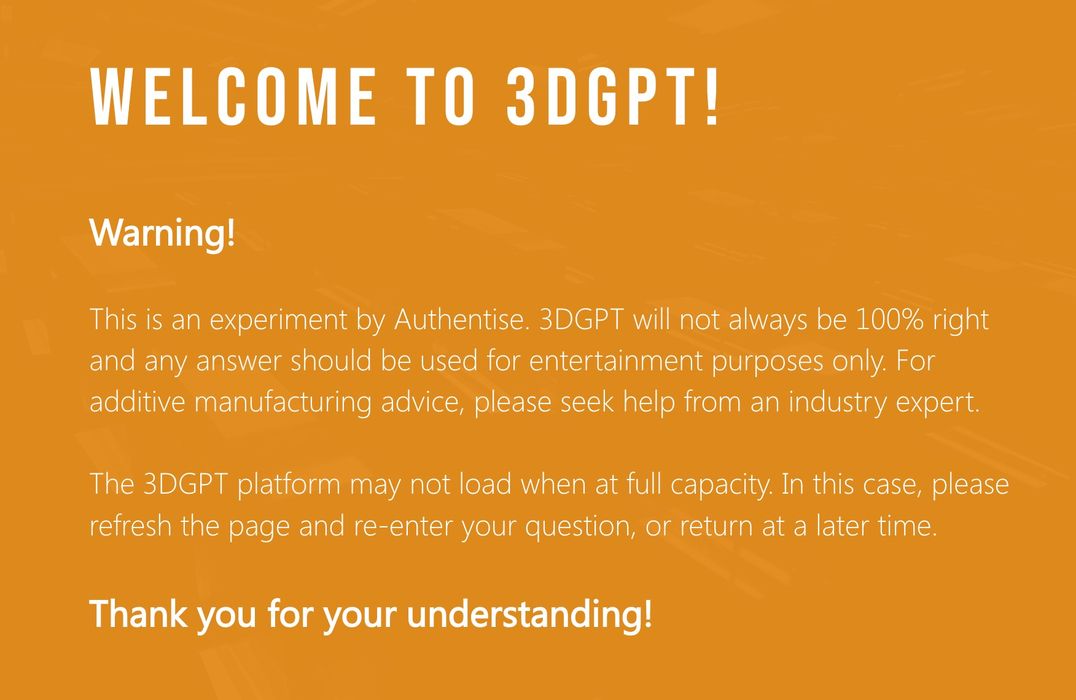
Authentise announced something they call “3DGPT”, a new AI tool for 3D printing.
You’ll notice the letters “GPT” in the service’s name, and that’s no accident: this is a kind of “ChatGPT” for 3D printing.
ChatGPT has become the fastest growing service in history, gaining 100M users in only months. The text-based AI system can seemingly understand relatively complex text queries and provide (most times) reasonable results. It’s a massive time-saver in many situations.
The official ChatGPT system is trained on a wide variety of materials and is best used for general enquiries and text handling. For example, it doesn’t really know how to do arithmetic or mathematics, so any answers for that domain might be considered “hallucinations”.
For 3D printing, ChatGPT knows a few things about the technology. I asked GPT4 (the more powerful version of ChatGPT) what it knows about the technology:
But it doesn’t know everything, and there are plenty of deeper details that would be beyond its scope.
It is possible to fine tune the AI model by training with specific domain information on top of the regular AI model. This has been done for several areas of interest, but not in 3D printing.
Enter Authentise, who decided to do something about this.
They trained a new GPT model on nearly 12,000 scientific papers on additive manufacturing. The result is quite interesting. Authentise explains:
“With 3DGPT, users can ask any question – from general ones such as ‘What additive technologies can I use to 3D print concrete?’, to more specific ones such as ‘How do I reduce the likelihood of defects when working with Stainless Steel in powder bed fusion?’ – and receive intelligent answers rooted in deep industry knowledge in return. The answers utilise both the knowledge contained within the journal articles and standards, as well as the general knowledge on which OpenAI’s ChatGPT is built. Uniquely, the tool provides references to its more technical answers, providing users the chance to scrutinise 3DGPT’s answers.”
I gave it a try (thank you, Authentise, for providing early access to Fabbaloo!)

The answer was reasonable, but not terribly specific. In hindsight, the operator (me) was the problem: I didn’t specify enough detail and constraints in my question. This is a common issue in all AI systems: they are amazing, but they can’t read your mind. At least, not yet, anyway.
When you first use 3DGPT, you’ll see this ominous warning. Authentise realizes that their AI will almost certainly hallucinate from time to time, and there’s plenty of disclaimers. The good news is that in each response they provide references to the identified scientific papers so you can check out the actual research yourself. This is something that the official ChatGPT does not do.

The result is an AI that just might be able to quickly help additive manufacturing operators with tough questions. Perhaps the direct answers might not be presented, but certainly links to useful papers will be.
Presumably 3DGPT will be somehow leveraged into Authentise’s growing portfolio of advanced additive management functionality, but it’s not quite clear where they will use this new service. CEO Andre Wegner told us:
“It’s an experiment – we don’t know where this will go but I’m also clear as to the potential benefits for Authentise users. In future, I expect that we can detect something going wrong in the data, explain clearly what it is and then propose resolutions, also in everyday language, that the user can then select to take action on.”
This is one of the first big steps into AI by the additive manufacturing industry, and it certainly won’t be the last.
Via Authentise
